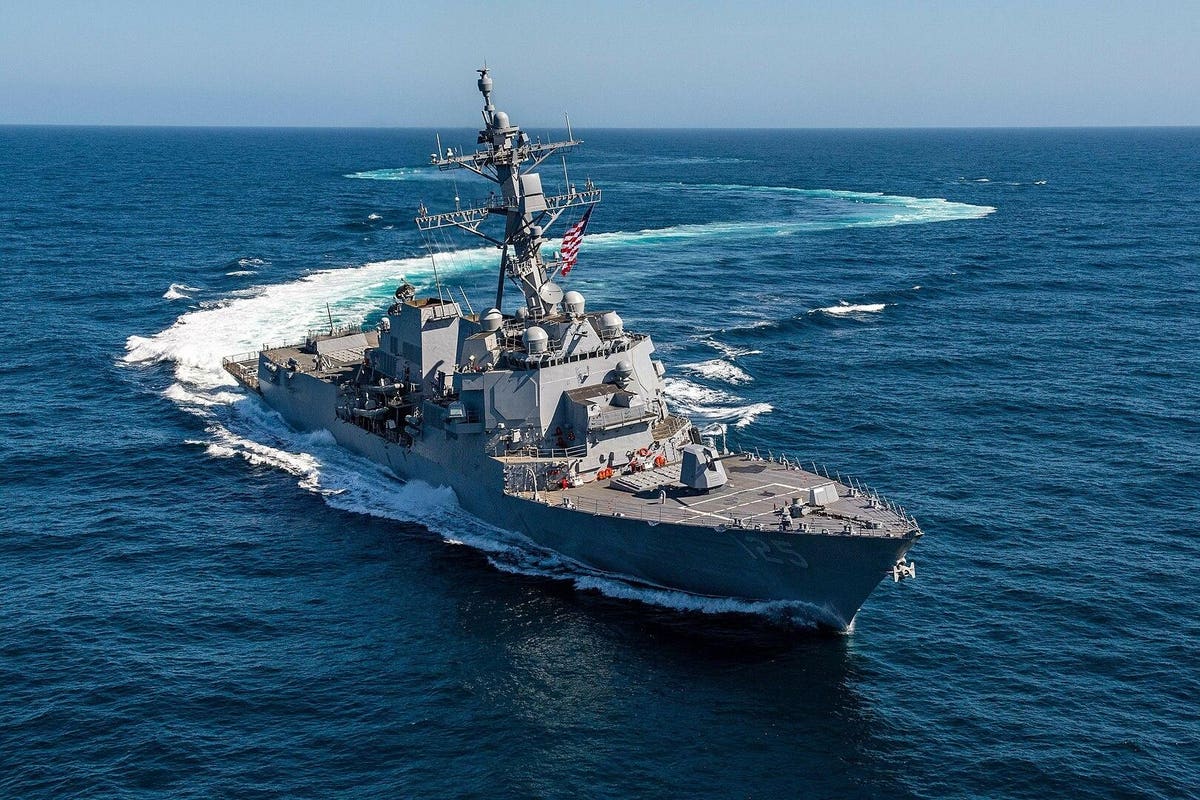The Arleigh Burke class of destroyers, designated DDG-51 in the Navy’s taxonomy, is arguably the most successful warship program of the postwar era.
It debuted in 1991 as the world’s most versatile surface combatant, and has retained that status through a process of continuous improvement.
The 72 Burkes in the fleet today are capable of executing anti-air, anti-surface, and anti-submarine warfare simultaneously. Most are also capable of defeating ballistic missiles.
The latest Flight III variant of the Burke, which begins entering the fleet this year, is equipped with a multifunction radar that far exceeds the range and sensitivity of previous maritime sensors.
ADVERTISEMENT
Its 96 vertical-launch tubes host an array of high-performance weapons capable of addressing virtually any threat, including those ashore.
After building Burkes for nearly four decades, the Bath Iron Works unit of General Dynamics
GD
Over the years, they have migrated through three major upgrades of the warship with minimal difficulty. Both companies contribute to my think tank.
But having packed immense firepower into a hull that displaces less than 10,000 tons, the Navy now says that it needs more space for future weapons.
It proposes to build a new class of destroyers almost 40% bigger—13,500 tons displacement versus 9,700 tons for the latest Burke—that would begin construction sometime early in the next decade.
The next-generation warship is designated DDG(X), with the “X” in effect standing for “experimental” since it is still in development.
ADVERTISEMENT
The Navy says it wants a new hull-form that contains an integrated propulsion system, meaning the engines that propel the ship would also generate power for onboard electronic systems.
In most other regards DDG(X) would mirror the capabilities of the Burkes, using the same combat system, radar and missiles.
However, DDG(X) probably is not going to happen. It costs too much.
The Navy claims that by using systems already resident on existing destroyers, it can build DDG(X) for only 10% more than the latest Burkes even though it is 40% bigger.
Eric Labs, a respected naval analyst at the Congressional Budget Office, begs to differ. He estimates the cost of each DDG(X) at $3.1-3.4 billion, the latter figure approaching twice the unit cost of a Flight III DDG-51.
ADVERTISEMENT
At that price, the only way the Navy could afford to maintain its current count of surface combatants would be to buy a handful of next-gen destroyers and a much bigger number of frigates.
But the Constellation class of frigates that recently began construction only provides a fraction of the Burke’s firepower while still costing over a billion dollars per ship to build.
This looks like a losing proposition in a threat environment where China’s maritime strength is growing steadily. As Beijing’s reconnaissance systems and long-range antiship weaponry proliferate, the logic of deploying high-priced surface combatants anywhere near the Chinese littoral looks dubious.
And the cost issue doesn’t end with the ship itself. One reason the Navy says it needs more space on future destroyers is to carry hypersonic weapons—which are too big to fit on the Burke class in its current configuration.
ADVERTISEMENT
However, Steve Trimble of Aviation Week reported in March that the hypersonic missiles the Navy is eying will cost $38 million each, which is an unusually expensive way of delivering a non-nuclear warhead.
The Navy is hard-pressed to maintain munitions stocks for weapons costing $1-2 million.
Hosting hypersonic weapons therefore is an implausible justification for building a new class of destroyers that in many regards will merely match the capabilities of the Burke class.
The argument for installing high-power lasers makes more sense, but the use of high-power lasers at sea is not a mature mission area.
Thus, when Navy Secretary Carlos Del Toro said late last year that DDG(X) should not move forward until the design is “mature,” he was effectively signaling a delay in the program. Del Toro said “we probably will continue to build DDG Flight IIIs for a long period of time.”
ADVERTISEMENT
Amen to that. Having aborted the fielding of three new classes of surface combatants since 2001, the Navy knows it can’t rush into a fourth such debacle.
And it doesn’t need to, because it already has a highly capable destroyer that has proven its ability to evolve as new threats appear.
Indeed, continuing to buy Burkes is the surest way to sustain a high count of vertical launch cells in the surface fleet at a time when robust firepower could be needed soon.
But what about the Navy’s contention that it needs more margin for growth on its destroyers—to host a new generation of weapons, to provide power and cooling for advanced electronics and so on?
The answer isn’t a new class of destroyers, which will take two decades to join the fleet in appreciable numbers. The answer is to develop a Flight IV variant of the Burke that stretches the hull to provide additional space.
ADVERTISEMENT
The increased volume would enable the Navy to reconfigure the hull’s internal architecture while bolstering an already impressive array of warfighting systems.
Perhaps more vertical launch systems could be added. Perhaps an air-defense radar even more capable than Flight III’s SPY
PY
SPY
In other words, the Navy can get most of what it wants from a next-generation destroyer without starting over, with all the risk that entails. It just needs to stay on the path of continuous improvement it has followed with the Burke class since the 1990s.
Anybody who follows political rhythms in Washington can sense that defense budget increases are likely to moderate in the years ahead. The Navy will be lucky just to stay ahead of inflation. This is no time to start a new warship program that it can’t afford when a simpler solution is available.
ADVERTISEMENT
Several companies that build or equip the DDG-51 class of destroyers contribute to my think tank. They would likely assume the same role on a next-generation destroyer.
Read the full article here





